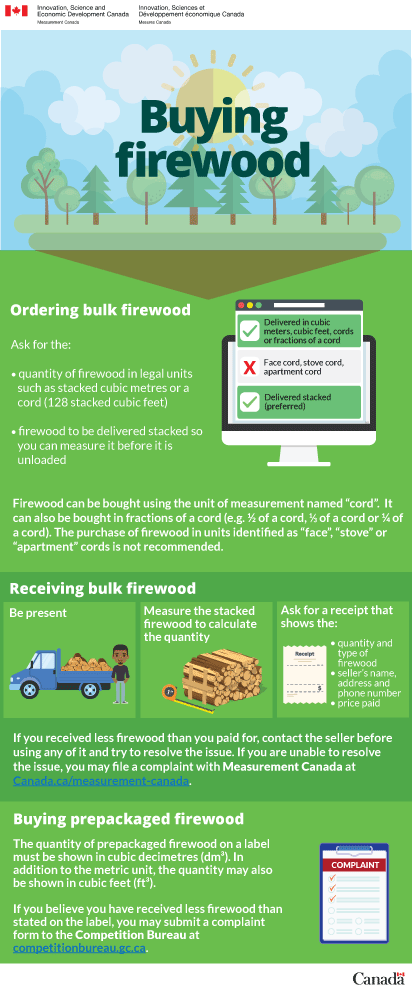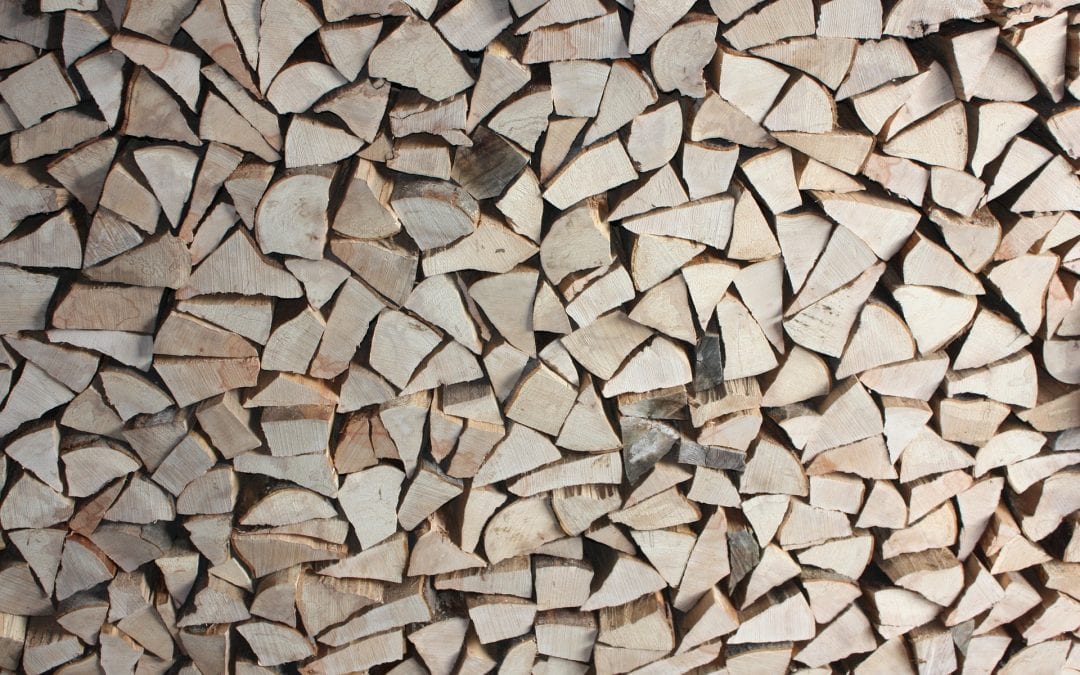If you have a wood burning system, be it a fireplace, stove, furnace or boiler, good quality firewood is the key to convenience, efficiency and safety.
Unseasoned, green or wet wood as well as any pieces that are not the right size and shape can be frustrating, burn inefficiently and deposit larges portions of creosote that can potentially fuel a dangerous chimney fire.
It takes proper planning, seasoning and storage of your firewood to provide a successful wood burning season.
Now prices vary considerably. This can be due to species, how well it has been seasoned, the amount you are purchasing or perhaps other factors such as how far they are driving to deliver it to your door. One of the biggest challenges, surprisingly, is how much are you actually getting. Wood in Canada can actually only be sold legally by the “full cord”, “fractions of a cord” or “cubic metre”. So ensure when you compare you are actually comparing the same volume. Many sell fractional units of a cord and call them “face cords”, “stove cords” or “furnace cords”; none of which are actually legal terms in Canada – however if that is what they are using then ensure you know the length as it may be 12 inches, 16 inches or even 24 inch lengths. ( 16 inch being the most common )
As with many products – the lowest cost is not always the best value. Sometimes getting firewod cut to the proper size of a great species and well seasoned or dried may just be worth a little more!
One of the best suppliers we have in our local area is in Waubaushene – Bretts Firewood. You can find in our Shop Local section.
If possible buy the wood in the spring, stack it in your yard and let it season.
So we mentioned the species as part of the value. What exactly are the best tree species for firewood? Well all woods have similar heat value or btu’s if measured by pound or kilogram. However you do not buy by weight but by volume. Hence the dense woods will provide more value for your dollar – unless the supplier is charging less for less dense woods such as birch, ash or poplar. Dense woods also burn longer and you have to carry less logs to the firebox. However, having said that, softer wood is not bad and DOES NOT create more creosote. In fact if dried properly it is all good.. yes birch, pine, spruce and poplar are all fine to use.
If you do have a mix of softer wood and hard, learn to use the softer wood in spring and fall and to mix the two in cooler weather. Save the dense wood for the coldest days of the year. Newer wood stoves, fireplaces and furnaces work well and can burn clean with a wide variety of wood species as they maintain a much better control over the combustion process.
Keep in mind the size of wood as well. Some fire wood providers do not split the wood small enough for effective fire building and maintenance. Big firewood pieces tend to smoulder longer when placed in the fire, potentially creating more creosote. Smaller pieces are better for small fires in mild weather and even in cold weather each load should be made up of a few small pieces that will ignite quickly and some larger pieces that will burn steadily for several hours. Best firewood loads have a variety of sizes, but all small enough to fit easily into your firebox.
How do you know when your wood is dry? There are several methods. Checks or cracks in the end grain is one, sometimes putting a piece against cheek can help with experience, thumping two pieces together and listening to sound can also help. We have a professional level moisture meter that takes all the guesswork out of the process. Well seasoned wood should be between 15 – 20% moisture content – too dry is another problem unto itself.
Heat value in wood. As mentioned earlier, while all wood has similar heat value or btu’s by weight it can vary considerably by species as the densities vary considerably. The very hardwoods like white oak or iron wood will have a lot of heat in each stick, sugar maple, red oak and beech would be next and of course the softer wood mentioned above would be the least amount per stick of similar size.
When comparing price, fully-seasoned firewood usually costs more than green, unseasoned wood simply because it has been stored for longer. Wood dries faster when cut into shorter length an split. Smaller cut firewood may also cost more due to the additional labour involved in the processing of the wood.
Well we do not sell firewood, we have had a lot of experience in cutting, stacking and using over the years and love to help our customers when needed.


